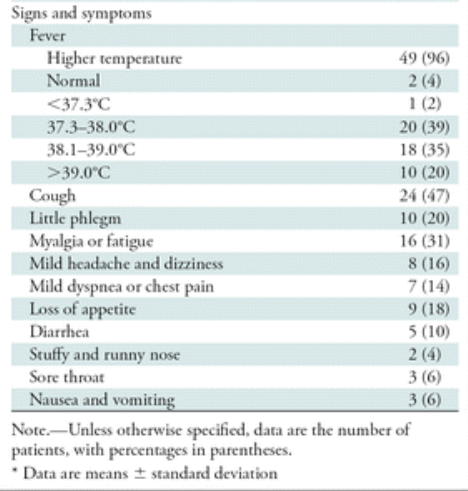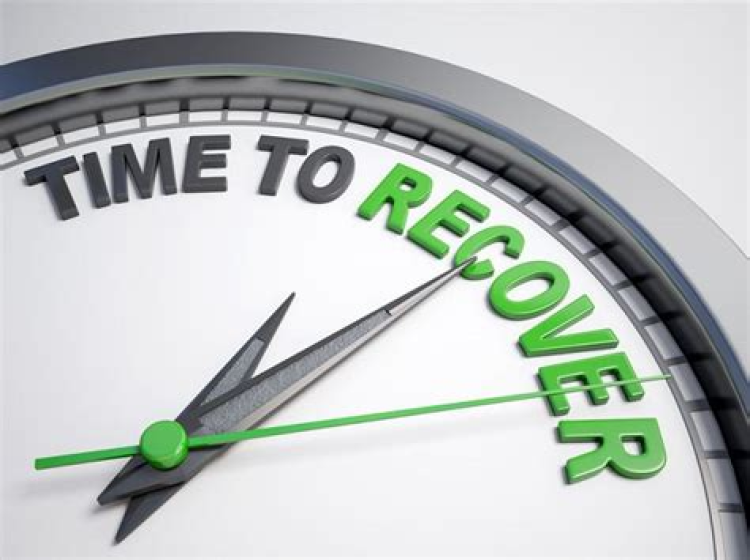Authors: By Jessica McBride Updated Apr 25, 2020 at 7:38pm
COVID-19 recovery time and symptoms can vary by person, but people who’ve had it often describe feeling like a mild cold is coming on before being hit with a fever, a dry cough, and shortness of breath. In short, it can be a slow-burning infection. However, others are asymptomatic or experience other symptoms, such as diarrhea, fatigue, a sore throat, a runny nose, and a headache. What is the recovery time for coronavirus?
Although the recovery time varies, reports show it’s a slow-moving illness that can take between two to six weeks to recover from, depending on how the body responds and the severity of illness. Experts say that it can take about a week of symptoms to know whether an infected person will end up in the hospital and worsen or start to get better. The World Health Organization reports:
The median time from onset to clinical recovery for mild cases is approximately 2 weeks and is 3-6 weeks for patients with severe or critical disease. Preliminary data suggests that the time period from onset to the development of severe disease, including hypoxia, is 1 week. Among patients who have died, the time from symptom onset to outcome ranges from 2-8 weeks.
You can read some real-life accounts of people who have had coronavirus later in this story as they describe how the virus recovery unfolded for them. What is the incubation period? “Because this coronavirus has just been discovered, the time from exposure to symptom onset (known as the incubation period) for most people has yet to be determined. Based on current information, symptoms could appear as soon as three days after exposure to as long as 13 days later. Recently published research found that on average, the incubation period is about five days,” says Harvard.
How soon into recovery can you stop isolating? According to WebMD, you should continue isolating until your fever has subsided for at least three days without medicine; your symptoms are better; and it’s been at least seven days since your symptoms started; or you’ve had two negative COVID-19 tests “24 hours apart.” According to John Hopkins Medicine, the virus usually starts in the throat, which is why it often produces a dry cough or sore throat. The problems really start if it migrates to the lungs. John Hopkins Medicine says that people with mild cases might recover in as little as a week.
According to NBC News, coronavirus is a virus with a “slow burn,” and experts say that, “very often,” the earliest symptoms are “minor physical complaints — slight cough, headache, low-grade fever,” that gradually get worse. Loss of taste and smell and red rimmed eyes have also emerged as possible symptoms of COVID-19. It often takes about a week after symptoms start to know whether the virus will worsen or the person will just get better, experts say. About half of the people who have COVID-19 never get symptoms at all, according to Fox News. That detail is based on research studies in Iceland, Vo, Italy, and the Diamond Princess cruise ship.
The World Health Organization reports that people with COVID-19 “generally develop signs and symptoms, including mild respiratory symptoms and fever, on an average of 5-6 days after infection (mean incubation period 5-6 days, range 1-14 days).”
About 80 percent of people end up with “mild disease” and recover, but this definition can include pneumonia. About 13.8 percent have severe disease, which includes shortness of breath and 6.1 percent are critical, suffering things like respiratory failure and septic shock, according to WHO.
The Centers for Disease Control and Prevention has now expanded its symptom list. Previously, the CDC listed only shortness of breath, a fever, and a dry cough as the key symptoms of coronavirus. Now the CDC lists the following:
People with COVID-19 have had a wide range of symptoms reported – ranging from mild symptoms to severe illness. These symptoms may appear 2-14 days after exposure to the virus:
Fever
Cough
Shortness of breath or difficulty breathing
Chills
Repeated shaking with chills
Muscle pain
Headache
Sore throat
New loss of taste or smell
Here’s what you need to know:
At About a Week In, Patients Tend to Get Better or End Up Hospitalized With Worsening Symptoms, Experts Say

Emerging 2019 Novel Coronavirus (2019-nCoV) PneumoniaEmerging 2019 Novel Coronavirus (2019-nCoV) Pneumonia
It’s take about a week to know whether the body will kick COVID-19.
“Patients tend to have symptoms for about a week before either getting better, or getting really sick,” Dr. Joshua Denson, who works at Tulane Medical Center in New Orleans, told NBC. Sometimes, the network reported, coronavirus patients think they’re getting better until they take a sharp turn for the worse. Of course, most people do recover.
Diarrhea – and other digestive issues like vomiting, nausea, abdominal pain, and lack of appetite – have all been documented as symptoms seen in coronavirus patients. Diarrhea, vomiting and abdominal pain may be early symptoms of coronavirus in some cases.
“Coronavirus disease 2019 (COVID-19) most commonly presents with respiratory symptoms, including cough, shortness of breath, and sore throat. However, digestive symptoms also occur in patients with COVID-19 and are often described in outpatients with less severe disease,” researchers in a study in The American Journal of Gastroenterology found.
That study found that the early symptoms of coronavirus can be gastrointestinal, with respiratory symptoms coming later: “In some cases, the digestive symptoms, particularly diarrhea, can be the initial presentation of COVID-19, and may only later or never present with respiratory symptoms or fever.”
However, the three most prevalent symptoms are a fever, a dry cough, and shortness of breath.
Absence of those things doesn’t mean you don’t have it, though. The scientific community is just starting to understand COVID-19.
“The most common symptoms of COVID-19, the disease caused by the new coronavirus, are fever, cough and shortness of breath,” according to John Hopkins Medicine. “Some patients also have body aches, runny nose, sore throat or diarrhea. If you have a sore throat and think you have been exposed to the new coronavirus, contact a health care provider by phone and discuss your risk.”
The World Health Organization indicates that based on 55,924 laboratory confirmed cases, “typical signs and symptoms include: fever (87.9%), dry cough (67.7%), fatigue (38.1%), sputum production (33.4%), shortness of breath (18.6%), sore throat (13.9%), headache (13.6%), myalgiaor arthralgia (14.8%), chills(11.4%), nausea or vomiting (5.0%), nasal congestion (4.8%), diarrhea (3.7%), and hemoptysis (0.9%), and conjunctival congestion (0.80%).”
For More Information: https://heavy.com/news/2020/04/covid-19-recovery-time-how-long-symptoms-last/
